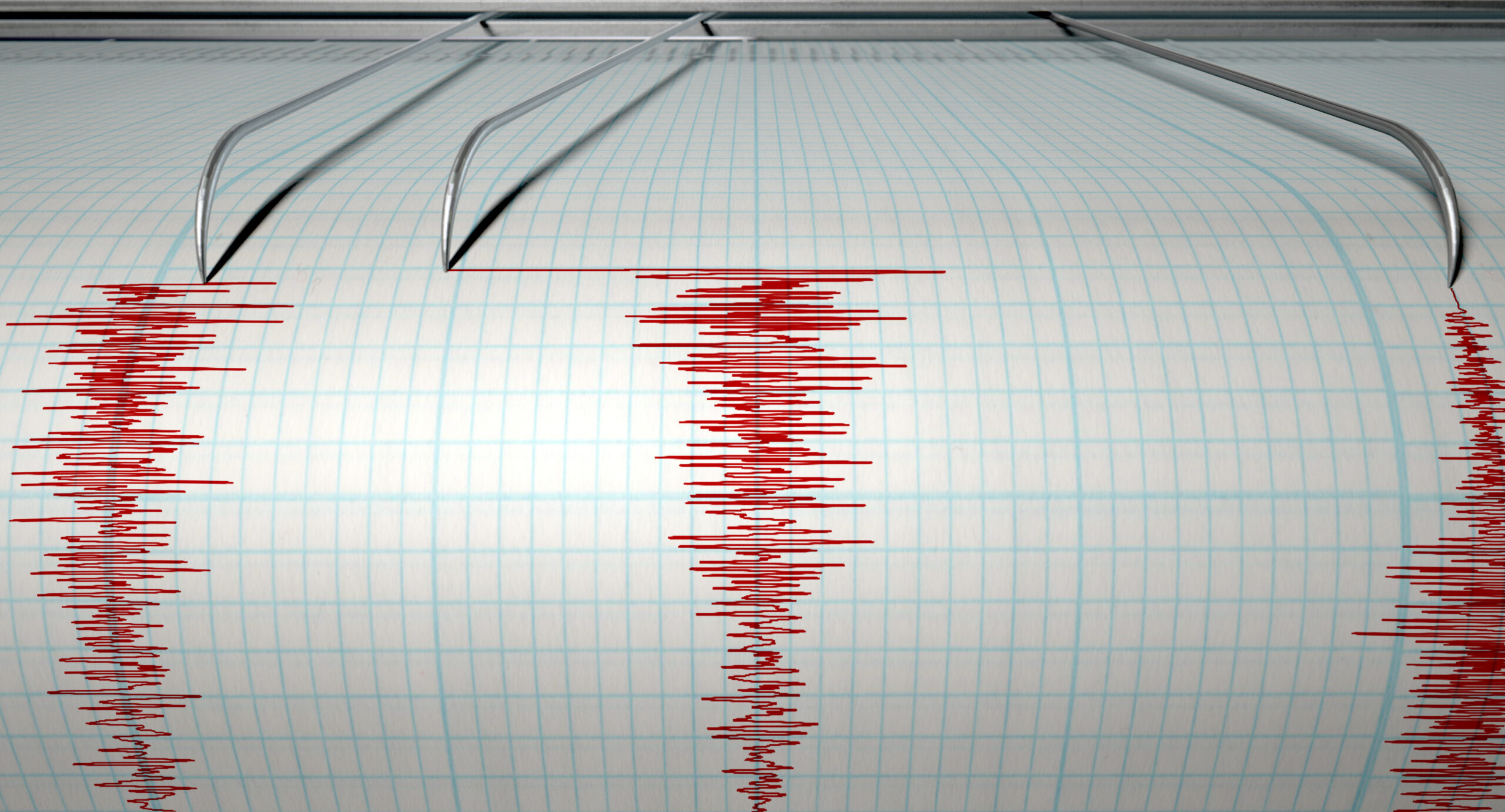

A siren blares in the distance just before the ground under your feet starts rocking, jolting you into action. You drop, cover, and hold on to something sturdy, wondering if this is the big one.
Unfortunately, according to a study published today in Science, there’s no way of knowing in those first few moments—even if you’re an expert. The researchers found that there’s really no way to tell how big an earthquake will get from its very early motions.
Earthquakes are most commonly measured by their magnitudes, or the size of the earthquake at its source. There is currently no way to reliably predict when an earthquake will occur. But these tremors happen over time, from seconds to minutes. Knowing how big an earthquake will be as soon as possible could help people better brace themselves for impact.
“When people started to come up with early warning systems, some people thought that final magnitudes would be predictable,” says Men-Andrin Meier, an author of the study.
But by piecing together information from over 100 large (magnitude 7.0 or higher) earthquakes around the world, they found that instead, the shaking follows a very similar pattern. The earthquake starts, the magnitude goes up linearly, peaks, and then recedes, making a rough triangle or ^ shape in the data. For people experiencing a tremor, that means you won’t know you’ve reached the peak until the shaking starts to subside.
“I think it’s a very important paper,” says Christopher Scholz, a geophysicist at Columbia University who was not involved with the study. “I’m not surprised, I’ve witnessed this phenomenon first hand.”
Scholz was in Tokyo shortly after the 2011 Tohoku-Oki Earthquake, as aftershocks were still rattling the country.
“You would feel the surface waves building up and building up, and you didn’t know when it was going to stop until the shaking started to decrease,” Scholz says. “You’d say, when is this going to stop? How big is this?”
With such a simple pattern, you might wonder why people haven’t noticed it before. That’s because the observational techniques and computational power needed to pull together all this information have only been around for a relatively short time.
The problem is, it’s really hard to observe earthquakes directly. That might seem strange, since we see the devastation they cause and feel the ground tremble beneath our feet. But the origin of that geological quiver is usually completely inaccessible to scientists. The earthquake that struck Mexico City this week, for example, didn’t just start over 100 miles away from capital as the crow flies—it also started over 30 miles under the surface, far removed from any cameras or instruments that could possibly show exactly what was happening as the earth cracked apart and released those waves of energy.
But if you can’t observe the birth of a seismic event like this one directly, indirect observations will have to do. To get the information used in this study, one of Meier’s colleagues, Lingling Ye, gathered observations made of ground shaking from around the world during different earthquakes.
“What Lingling tries to find out is how did that rupture evolve in both space and time,” Meier says.
For each earthquake, Ye doesn’t just look at the leaping lines captured by seismometers closest to the event, but also gathers readings from distant locales that might have also picked up the motion of the Earth. Information from seismometers in Japan or Germany might contain different details about the break, giving a fuller picture of what happened. Ye then puts all that information together to get an idea of how the magnitude increased and decreased during the event itself.
Researchers like Meier hope that even though they can’t tell if the “Big One” is racing towards a city immediately, that their research could help earthquake early warning systems figure out how to process and send out updated information to larger areas quickly as the measurements start coming in, without becoming Chicken Little.
The big question that people are trying to answer, Meier says, is how to design an early warning system that generates the smallest number of false alerts and the largest number of correct alerts possible.
That’s going to require a lot more research. Meier notes that while all the earthquakes they looked at followed the same general pattern, there were some odd outliers.
“Part of their paper suggests that those really big ones, a lot bigger than [magnitude] 8, might have differences that might not be explained yet,” Scholz says.
For those quakes, the slope might be drawn far more jaggedly than its smaller counterparts, still with a triangular line of best fit, but with some large (or very small) deviations in the actual shaking on either side of that line. Researchers will have to do a lot more digging before they know why.
In addition to only focusing on earthquakes larger than a magnitude 7, this paper also focused exclusively on subduction zone earthquakes, or earthquakes that occur where one part of the Earth’s crust slides underneath another. Future studies might explore if the same pattern could also apply to earthquakes that happen in other situations, like places where the crustal plates are sliding past each other.
“There’s a lot of open questions, and we’re at the beginning rather than the end of it. This is the first spectacular observation,” Meier says. “Now we’re going to try to figure out what it all means.”